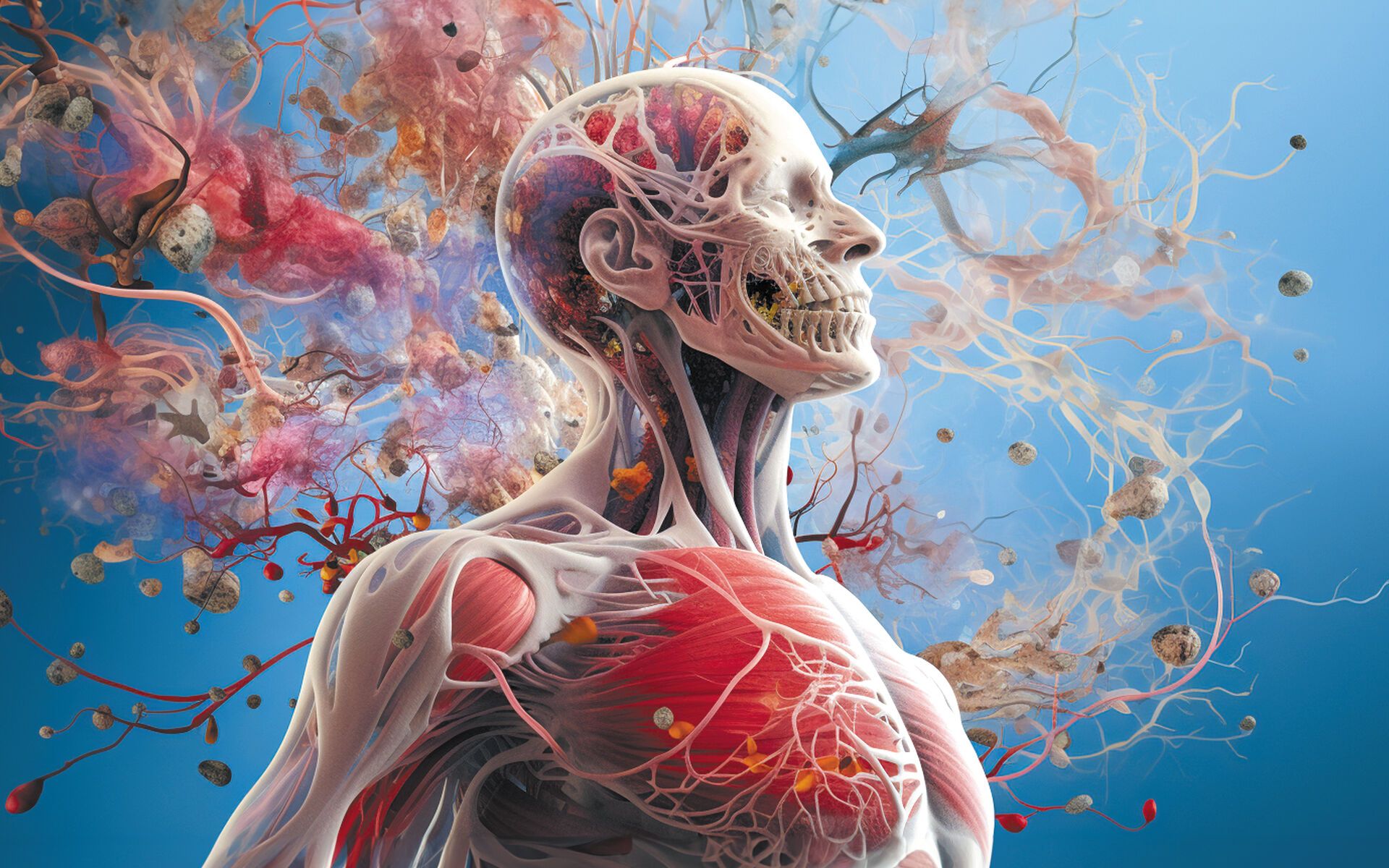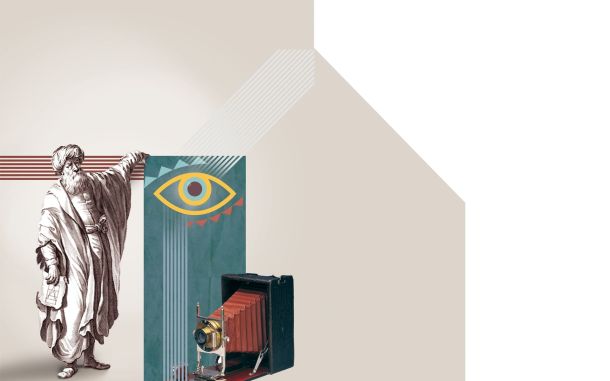The Immune System’s Sentry Tower

In This Article
-
A new “protective shield,” which has been recently discovered by scientists, is like a watchtower, so to speak, for the cells of the immune system.
-
The fluid surrounding the brain acts as a shock absorber just like a cushioning inside a bike helmet. This fluid does not stay in the subarachnoid space but circulates through the tubing and cavities inside and around the brain, filtering the waste products and bringing them to the blood’s circulation.
-
The widely-held belief that we can use only 10 percent of our brain power is not correct. Yet, it has recently been demonstrated that neurons constitute only 10 percent of all brain cells. The remaining 90 percent are called glia, meaning “adhesive” in Greek, and these glial cells correspond to approximately half of the brain’s weight.
De Humani Corporis Fabrica Libri Septem (On the Structure of the Human Body in Seven Books) by Andreas Vesalius is a collection of books on human anatomy published in Europe during the Renaissance. It can be considered as the most famous book of its kind with quality anatomical pictures and accurate depictions for that time. Hundreds of studies have been conducted on human anatomy since the first edition of this famous book was published in 1543. New atlases of anatomy have been published as more organs are described and depicted in illustrations. Today, modern anatomy books, including Sobotta Atlas of Human Anatomy in particular, are decorated with perfect illustrations, drawings, and descriptions demonstrating that human body is a source of infinite miracles. The science of anatomy has paved the way for many to feel awe in this magnificent creation of God. This was true even during the science’s infancy when it was dealing with organs at a macro level in terms of proportionality, balance, and perfect fitness to their functions. As the science moves deeper into the micro levels, the magnificence of divine art and embroidery increases and helps people attain more profound faith.
Even when people suggest that it is no longer possible to discover a new organ or tissue, new developments in the field are announced, bringing novel purposes into the spotlight. An article published in the journal Science on January 5, 2023, refers to a new “protective shield” discovered by scientists in addition to the existing ones. This shield is like a watchtower, so to speak, for the cells of the immune system.
According to the article, this novel anatomic structure acts as a barrier and serves as a platform for cells of the immune system so that they can watch over and monitor the brain. The study conducted on mouse and human brains found that this protective shield facilitates the cleaning of waste resulting from brain activities and functions as a “sentry tower” for immune system cells that look for signs of infection.
The brain is wrapped by a cerebrospinal fluid that acts as a protective cushion. The ependymal cells that line the four interconnected ventricles in the brain are given the task of producing up to 500 ml of cerebrospinal fluid on a daily basis. The fluid in these ventricles is made to circulate around the brain and the spinal cord so that it can protect the brain from mechanic concussions and clears away waste. This fluid is eventually sucked by capillaries into the blood’s circulation.
This system of removing waste products coming from the cerebrospinal fluid is called the glymphatic system. Studies suggest that this process occurs mostly during sleep. A 2013 article indicated that in mice, the gaps between the cells in the brain expand by 60 percent during sleep, allowing faster removal of amyloid beta (plaques found in Alzheimer's disease) by the glymphatic system compared to when the mice were awake. One of the reasons for the great importance of sleep is that it helps to clear away this neurotoxic waste via the glymphatic system [1].
The novel discovery reported in the above-mentioned study is that a thin tissue having a thickness of only a number of cells was observed to divide horizontally into two the subarachnoid space of the middle one of three membranes surrounding the brain (namely, the dura mater (thick membrane); arachnoid mater (the membrane resembling a spider web); and the pia mater (delicate membrane)). This space between several different tissue layers located between the inner surface of the skull and the outer surface of the brain is actually not empty, but contains the cerebrospinal fluid, large blood vessels, and a spider web-like connective tissue [2].
This fluid surrounding the brain acts as a shock absorber just like a cushioning inside a bike helmet. This fluid does not stay in the subarachnoid space but circulates through the tubing and cavities inside and around the brain, filtering the waste products and bringing them to the blood’s circulation. The authors of the above-mentioned study believe that the newly discovered “shield” may assist the cerebrospinal fluid in controlling this cleaning function.
Dr. Maiken Nedergaard, one of the authors of the study, notes that the newly discovered anatomic structure that helps to regulate the flow of the cerebrospinal fluid inside and around the brain not only assists the cerebrospinal fluid at flushing away the waste but also plays a very important and strategic role in the protection of the brain by the immune system.
This shield, referred to as the subarachnoid lymphatic-like membrane by the authors, separates the space beneath the arachnoid mater into two compartments, one closer to the skull and the other closer to the brain. The experiments on mice showed that the pia mater prevents most proteins from migrating between compartments, allowing only extremely tiny molecules to pass. In addition, tissue samples taken from adult human brains provided evidence of this new tissue.
The studies on the newly discovered membrane-like tissue layer demonstrated the link between the dirty cerebrospinal fluid containing waste products and the amyloid plaques found in Alzheimer's disease, showing that the cerebrospinal fluid can help to segregate and flush them. However, more extensive studies should be conducted into the functioning of this protective shield in a healthy brain as well as brain defects caused by its dysfunction.
Researchers revealed that numerous and various immune system cells may be embedded into this shield and the number of these cells increased in mice in response to inflammation and advanced aging. This finding supports the view that this tissue serves as an “immunologic observatory” where immune system cells monitor the cerebrospinal fluid for signs of infection and inflammation and call for additional firepower when needed.
The cells of the capillaries that nourish the brain form a boundary called the “blood-brain barrier,” preventing large molecules from entering the sterile inner area of the brain and allowing certain special proteins to carry food and molecules required for the vitality of neurons. If the newly discovered shield is destroyed, the immune system cells coming from the skull’s spongy bone marrow can occupy the brain surface which they cannot normally reach. This explains why traumatic brain injuries usually lead to extended inflammation of the brain and disturbs the flow of the cerebrospinal fluid, but these hypotheses need to be tested.
In addition, there is increasing support to the theory that traumatic injuries to this newly discovered protective shield are linked to increased risk of developing Alzheimer’s disease.
Most of our brain cells are not neurons
The surface of the human brain has a folded structure due to deep crevices called sulci and smaller ridges called gyri. There are approximately 100 billion brain nerve cells (neurons) in this thick layer called the cerebral cortex. This folded surface creates larger space and more processing power inside the limited skull cavity.
The widely-held belief that we can use only 10 percent of our brain power is not correct. Yet, it has recently been demonstrated that neurons constitute only 10 percent of all brain cells. The remaining 90 percent are called glia, meaning “adhesive” in Greek, and these glial cells correspond to approximately half of the brain’s weight. They are not only adhesive cells that keep neurons together but also have important functions such as cleaning excessive neurotransmitters, fortifying the immune system, and ensuring the growth and functioning of synapses.
The more excellent or splendid a work of art, the higher care or diligence is needed to protect it. Indeed, a sculptor will not allow his work to be subjected to rain, wind, or storm after working on it for months. Rather, he or she will secure it with supports from all sides and ensure that it stands on a sound platform and is fastened with ropes, and he or she will drape protective covers and sponges on it. Likewise, the Creator of our body ensures that our brain, the most excellent living organ ever created, is covered with three layers with different characteristics for protection, and a cushioning layer consisting of a special fluid is placed under each cover. It is further placed inside a protective case made of bone and its surface fashioned with a skin. There are still unknown aspects or characteristics of the human body and spirit. Apparently, we will continue to be surprised with new discoveries in coming years.
Footnotes
- L. Xie et al. "Sleep Drives Metabolite Clearance from the Adult Brain", Science, Oct. 2018; 342 (6156). 2013, s. 373–373.
- M. Nedergaard et al. "A mesothelium divides the subarachnoid space into functional compartments", Vol 379, Issue 6627, 2023, s. 84–88.









